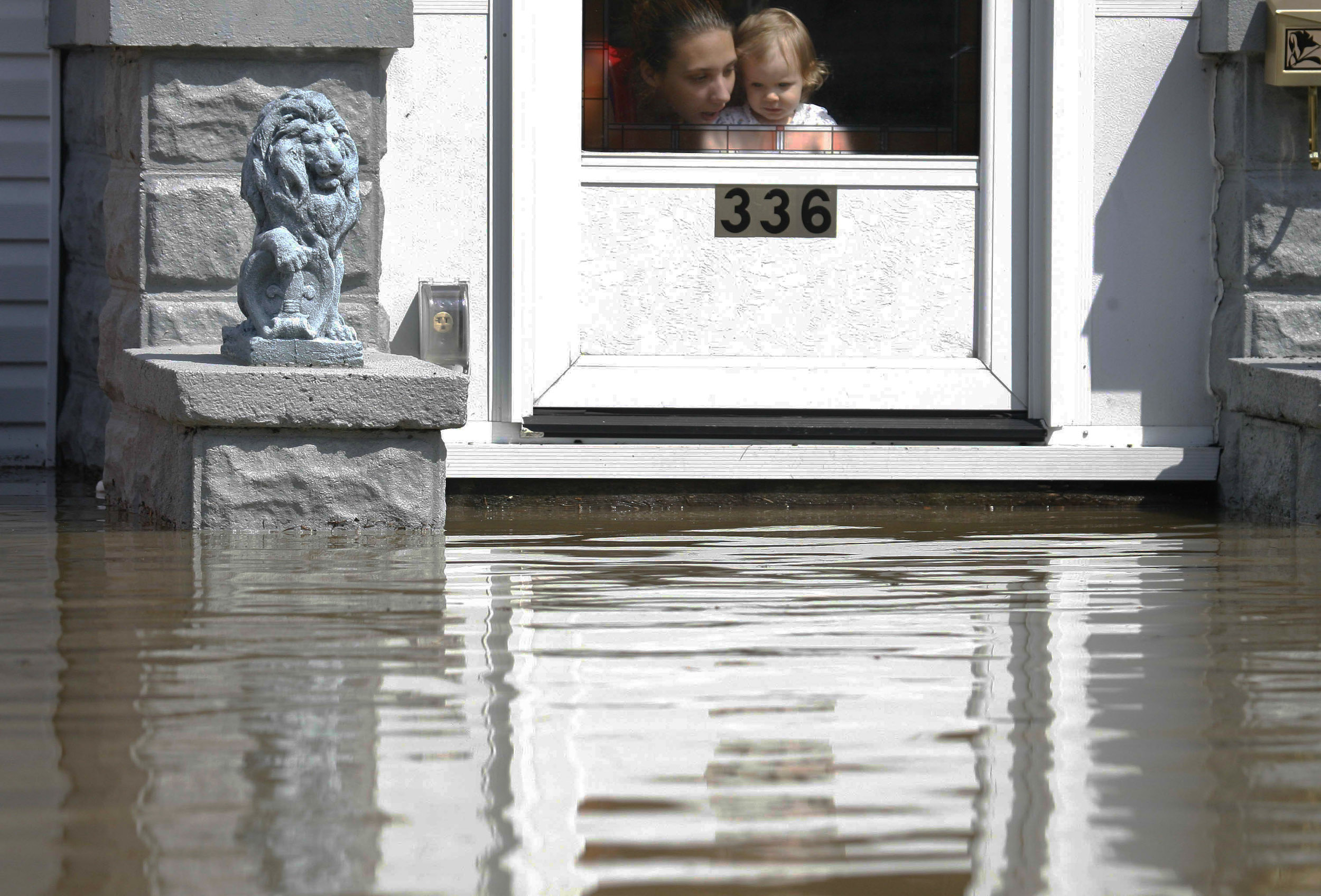 Covering COVID-19 is a daily Poynter briefing of story ideas about the coronavirus and other timely topics for journalists, written by senior faculty Al Tompkins. Sign up here to have it delivered to your inbox every weekday morning.
Covering COVID-19 is a daily Poynter briefing of story ideas about the coronavirus and other timely topics for journalists, written by senior faculty Al Tompkins. Sign up here to have it delivered to your inbox every weekday morning.
Since most of us seem to have moved on from COVID-19, we may be missing the new first symptoms caused by the latest virus subvariants.
The Evening Standard reports that COVID-19 cases in the United Kingdom have recently risen 14% in what may be the beginning of an “autumn wave.” People there who turn up positive for COVID-19 are reporting that their first symptom is a sore throat. That is different from the first symptoms you may be alert to; fever and loss of smell are really rare now.
Experts worry that people who may have new subvariant infections will not test because they think they just have a cold.
For more than two years, the Centers for Disease Control and Prevention posted a list of symptoms and warned, “You cannot tell the difference between flu and COVID-19 by symptoms alone because some of the symptoms are the same.”
Supreme Court refuses to hear case on vaccine mandates for health care workers
The U.S. Supreme Court will allow President Joe Biden’s November 2021 rule requiring health care workers to be vaccinated against COVID-19.
Missouri, Nebraska, Alaska, Arkansas, Iowa, Kansas, New Hampshire, North Dakota, South Dakota and Wyoming wanted the Supreme Court to consider their challenge to the federal rule that said if a health care facility receives federal funding, workers must be vaccinated. That means virtually every hospital — most of which accept Medicare and Medicaid — would be included.
The court’s rejection of the lawsuit is not really a surprise considering that the court ruled 5-4 earlier this year to let the order stand while lawsuits wound their way through lower courts. In January, the majority wrote:
Congress has authorized the Secretary to impose conditions on the receipt of Medicaid and Medicare funds that “the Secretary finds necessary in the interest of the health and safety of individuals who are furnished services.”
The rule thus fits neatly within the language of the statute. After all, ensuring that providers take steps to avoid transmitting a dangerous virus to their patients is consistent with the fundamental principle of the medical profession: first, do no harm. It would be the “very opposite of efficient and effective administration for a facility that is supposed to make people well to make them sick with COVID–19.”
The court reasoned that COVID-19 vaccine mandates were not much different from requiring health care workers to be vaccinated against other infections:
Vaccination requirements are a common feature of the provision of healthcare in America: Healthcare workers around the country are ordinarily required to be vaccinated for diseases such as hepatitis B, influenza, and measles, mumps, and rubella.
The dissenting justices have maintained that Congress did not give the Department of Health and Human Services the authority to impose such mandates.
CDC suspends country-specific travel restrictions
The CDC says, starting this week, it will only issue a COVID-19 travel notice for a country if there is a concerning variant or other notable situation. It marks the suspension of a practice that began with a COVID-specific travel notice for China in January 2020.
Also this week, Canada ended all COVID-19 travel restrictions. Travelers in and out of the country no longer have to use the ArriveCAN app or website and no longer have to provide proof of vaccination.
1% of federally flood insured properties account for 30% of claims, flooding over and over

In this Wednesday, Aug. 22, 2007 file photo, a woman and a child look out of their front door at flood waters in Findlay, Ohio. (AP Photo/Madalyn Ruggiero)
This is not just a coastal or hurricane issue. It is a national issue.
The National Flood Insurance Program covers about 5 million properties. About 1% of those properties are classified as repetitive loss properties, which means they have been damaged and insurance programs paid for repairs multiple times. Those 1% of properties account for 30% of all claim payments. In 2020, the Government Accountability Office said the program has paid a cumulative $22.2 billion in claims to repetitive loss properties.
To qualify as a repetitive loss property, the federal flood program had to have paid two or more claims of at least $1,000 within a rolling 10-year timeframe. And while the federal flood insurance program is trying to become less taxpayer-dependent, some experts say it will take a decade for owners of expensive and riskier homes to pay the actuarially correct cost given that premiums, by law, can at most be raised 18% a year.
From 1989 through 2018, the Federal Emergency Management Agency (FEMA) recorded nearly 229,000 RLPs, with 82 percent of them in just 14 states. These properties are not limited to the coasts, either; they exist in every state, including in large concentrations in the Midwest.
Pew notes that the rate of repetitive loss properties is increasing faster than the government can acquire or help fix them.
Since 1989, more than 57,000 properties have been acquired, elevated, relocated, or otherwise flood-proofed using FEMA Hazard Mitigation Assistance funding that can help states and localities to reduce flood risk. And although this funding, as well as other mitigation actions by governments at all levels, is helping to decrease RLPs, the problem is actually growing. From 2009 to 2018, FEMA documented three new RLPs for every RLP property that was mitigated.
When FEMA published a report a decade ago about the wisdom of “flood mitigation” rather than continuously paying out flood claims to properties in flood-risk zones, it pointed to a Fort Myers Beach resort as an example of why it makes sense to use federal dollars to minimize flood risk rather than just building the same buildings back time after time. This was the photo on the front cover of FEMA’s report:
That 2011 report noted:
This resort complex located 200 feet from the San Carlos Bay coastline in Fort Myers Beach, Florida was elevated through a joint Federal, State of Florida, and local mitigation project. In the last two decades, seven hurricanes have caused flood- and wind-related damages to the complex, resulting in nearly $100,000 in repair costs per event. The Flood Mitigation Assistance (FMA) program funded the Federal share (75%) of the elevation of six buildings within the complex. The effectiveness of the mitigation project was tested when Hurricane Charley hit Fort Myers Beach in August 2004. At that point, four of the resort buildings had been elevated. Those four buildings experienced only minimal damage and were able to stay open and functional while several nearby hotels and motels were flooded, damaged, and/or forced to close. It is estimated that approximately $200,000 in repair costs alone were avoided in 2004 because of the mitigation afforded by the elevation project.
The shock that comes when homeowners discover insurance does not pay for hurricane water damage
Flood damage is not just a Florida hurricane matter. Floods cause the most damage among all natural disasters, according to FEMA.
4.3 million homes in the U.S. face an annual risk of flooding of at least one in 100, says First Street Foundation. 14.6 million properties across the country are at substantial risk of flooding.
Imagine you dutifully pay your homeowner’s insurance month after month, then a hurricane blows in or a creek overflows and a flood wrecks your home. You might assume that your insurance would cover such a thing. But insurance often does not cover water damage if it’s not the result of an accident or sudden, unexpected occurrence, like a broken pipe. A general rule of thumb in the insurance business is, “If the water comes from outside your home, it will not be covered by your standard policy.”
For flood coverage, including hurricane storm surge coverage, you will need actual flood insurance, usually from the national flood insurance program. 13% of Floridians have flood insurance.
The South Florida Sun-Sentinel reported:
Mark Friedlander, communications director for the industry-funded Insurance Information Institute, said Ian could cause up to $35 billion in property losses, and much of it will come from flooding
“Those without flood coverage will have to rely on FEMA emergency grants that would only cover a small portion of losses,” he said. “FEMA funds are not a replacement for insurance coverage.”
Ian comes at a bad time for Florida’s insurance market, which has endured five straight years of collective operating losses and was poised to lose $1 billion in 2022 even without Ian coming to the state.
Homeowners have seen premiums double over the past four years and now pay the highest average premiums of all 50 states. Increasing weather severity, claims fraud and high rates of litigation helped push six insurers into insolvency this year, and an unknown number of surviving companies were not able to secure as much reinsurance — that’s insurance insurers pay — as they had planned.
Looking forward, the cost of flood insurance will become an even bigger issue. The First Street Foundation built a map of the areas it says are most likely to have even worse flooding problem within a few decades. Clearly coastal areas are the most at risk, but it is not just coastal areas that face increasing flood risks.
Is white rice bad?
A new study looked at 1,168 healthy patients and compared them to 1,369 patients with coronary artery disease. The less healthy patients ate more refined grains, like white rice. Healthier patients ate more whole grains, like brown rice. The researchers found that refined grains are sort of like candy.
Lead study author Dr Mohammad Amin Khajavi Gaskarei said the damage done by a diet high in these grains was similar to eating lots of junk food.
‘A diet that includes consuming a high amount of unhealthy and refined grains can be considered similar to consuming a diet containing a lot of unhealthy sugars and oils,’ he said.
While we are at it, let’s do some rice facts:
- 95 percent of all sushi eaten in the U.S. is made with U.S.-grown rice.
- 80 percent of all the rice consumed in the U.S. is grown in the U.S.
- The average American consumes 27 pounds of rice a year.
- U.S.-grown rice is naturally gluten-free and the least allergenic of all the grains.
- All U.S.-grown rice is sodium-free, cholesterol-free, and GMO-free.
- A serving of U.S.-grown rice delivers over 15 vitamins and minerals.
- The U.S. rice industry produces 20 billion pounds of rice annually.
- There are 5,563 rice farmers throughout the country that grow rice across a collective 2.8 million acres.
- Most of the farming is done by family farms across six major rice-producing states of Arkansas, California, Louisiana, Mississippi, Missouri, and Texas.
- On average, each rice farm contributes $1 million to their local economy.
- The U.S. rice industry contributes more than $34 billion to the U.S. economy annually and provides jobs for more than 125,000 people in the U.S.
- The U.S. is the 5th largest rice exporter in the world and the largest rice exporter outside of Asia.
- Each year the U.S. rice industry distributes 40 million pounds of rice to combat food insecurity.
FDA proposes guidelines for what is ‘healthy’

In this Tuesday, Aug. 20, 2019 photo, volunteer Xavier Lopez helps a customer select fruits and vegetables at the Fresh MARTA Market at the West End transit station in Atlanta. (AP Photo/Andrea Smith)
The Food and Drug Administration is floating a proposal to more closely define what manufacturers may claim is “healthy.” The proposal says the new definition of healthy means the product contains a meaningful amount of food from at least one of the food groups or subgroups, including fruit, vegetable or dairy. “Healthy foods” would also have to limit saturated fat, sodium and added sugars.
The FDA says only about 5% of foods can currently be labeled as “healthy” under rules set in 1994. It explained the need for the new rules:
This proposed rule would align the definition of the “healthy” claim with current nutrition science, the updated Nutrition Facts label and the current Dietary Guidelines for Americans.
More than 80% of people in the U.S. aren’t eating enough vegetables, fruit and dairy. And most people consume too much added sugars, saturated fat and sodium. The proposed rule is part of the agency’s ongoing commitment to helping consumers improve nutrition and dietary patterns to help reduce the burden of chronic disease and advance health equity.
The proposed rule comes on the heels of the White House Conference on Hunger, Nutrition, and Health, as well as the release of the related national strategy, which aims to end hunger, improve nutrition and physical activity, reduce diet-related diseases and close disparity gaps by 2030.
The proposed rule would update the “healthy” claim definition to better account for how all the nutrients in various food groups contribute and may work synergistically to create healthy dietary patterns and improve health. Under the proposed definition for the updated “healthy” claim, which is based on current nutrition science, more foods that are part of a healthy dietary pattern and recommended by the Dietary Guidelines would be eligible to use the claim on their labeling, including nuts and seeds, higher fat fish (such as salmon), certain oils and water.
Journalists who cover hurricanes want to know if anything on the Waffle House menu other than dry wheat toast will qualify as healthy.
We’ll be back tomorrow with a new edition of Covering COVID-19. Are you subscribed? Sign up here to get it delivered right to your inbox.











